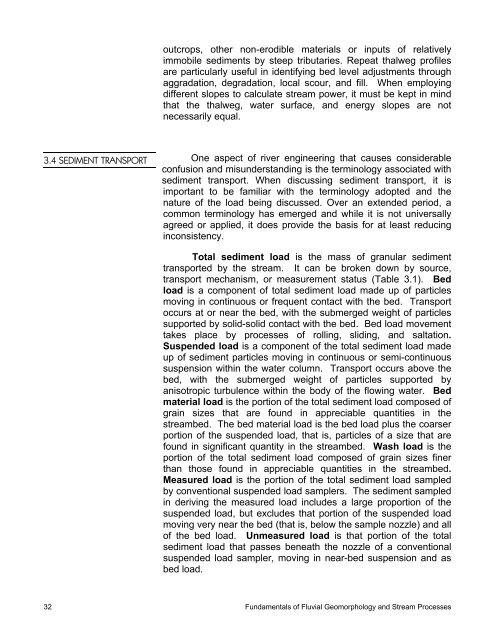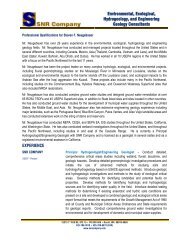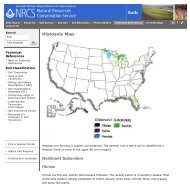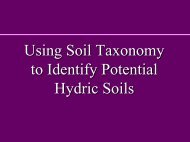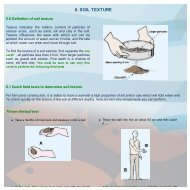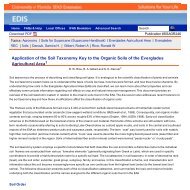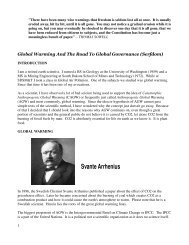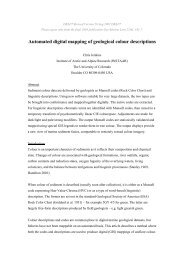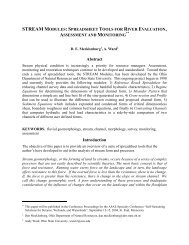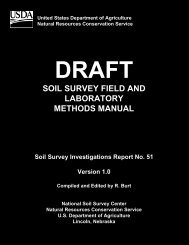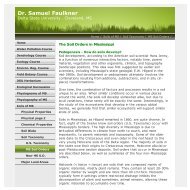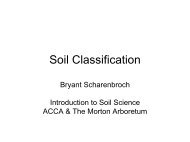chapter 3 fundamentals of fluvial geomorphology and stream ...
chapter 3 fundamentals of fluvial geomorphology and stream ...
chapter 3 fundamentals of fluvial geomorphology and stream ...
You also want an ePaper? Increase the reach of your titles
YUMPU automatically turns print PDFs into web optimized ePapers that Google loves.
outcrops, other non-erodible materials or inputs <strong>of</strong> relativelyimmobile sediments by steep tributaries. Repeat thalweg pr<strong>of</strong>ilesare particularly useful in identifying bed level adjustments throughaggradation, degradation, local scour, <strong>and</strong> fill. When employingdifferent slopes to calculate <strong>stream</strong> power, it must be kept in mindthat the thalweg, water surface, <strong>and</strong> energy slopes are notnecessarily equal.3.4 SEDIMENT TRANSPORTOne aspect <strong>of</strong> river engineering that causes considerableconfusion <strong>and</strong> misunderst<strong>and</strong>ing is the terminology associated withsediment transport. When discussing sediment transport, it isimportant to be familiar with the terminology adopted <strong>and</strong> thenature <strong>of</strong> the load being discussed. Over an extended period, acommon terminology has emerged <strong>and</strong> while it is not universallyagreed or applied, it does provide the basis for at least reducinginconsistency.Total sediment load is the mass <strong>of</strong> granular sedimenttransported by the <strong>stream</strong>. It can be broken down by source,transport mechanism, or measurement status (Table 3.1). Bedload is a component <strong>of</strong> total sediment load made up <strong>of</strong> particlesmoving in continuous or frequent contact with the bed. Transportoccurs at or near the bed, with the submerged weight <strong>of</strong> particlessupported by solid-solid contact with the bed. Bed load movementtakes place by processes <strong>of</strong> rolling, sliding, <strong>and</strong> saltation.Suspended load is a component <strong>of</strong> the total sediment load madeup <strong>of</strong> sediment particles moving in continuous or semi-continuoussuspension within the water column. Transport occurs above thebed, with the submerged weight <strong>of</strong> particles supported byanisotropic turbulence within the body <strong>of</strong> the flowing water. Bedmaterial load is the portion <strong>of</strong> the total sediment load composed <strong>of</strong>grain sizes that are found in appreciable quantities in the<strong>stream</strong>bed. The bed material load is the bed load plus the coarserportion <strong>of</strong> the suspended load, that is, particles <strong>of</strong> a size that arefound in significant quantity in the <strong>stream</strong>bed. Wash load is theportion <strong>of</strong> the total sediment load composed <strong>of</strong> grain sizes finerthan those found in appreciable quantities in the <strong>stream</strong>bed.Measured load is the portion <strong>of</strong> the total sediment load sampledby conventional suspended load samplers. The sediment sampledin deriving the measured load includes a large proportion <strong>of</strong> thesuspended load, but excludes that portion <strong>of</strong> the suspended loadmoving very near the bed (that is, below the sample nozzle) <strong>and</strong> all<strong>of</strong> the bed load. Unmeasured load is that portion <strong>of</strong> the totalsediment load that passes beneath the nozzle <strong>of</strong> a conventionalsuspended load sampler, moving in near-bed suspension <strong>and</strong> asbed load.32 Fundamentals <strong>of</strong> Fluvial Geomorphology <strong>and</strong> Stream Processes


